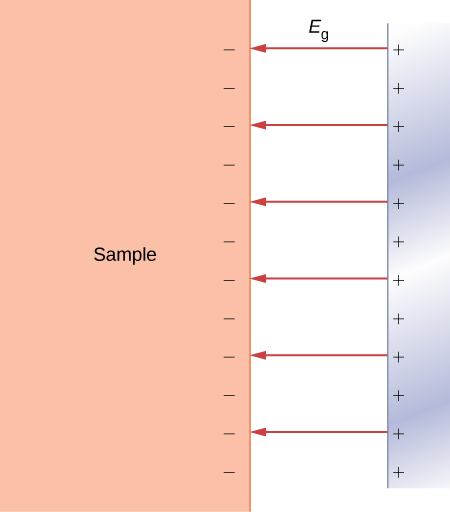| << Chapter < Page | Chapter >> Page > |
We see from this estimate that the higher the energy of -particle, the narrower the width of the barrier that it is to tunnel through. We also know that the width of the potential barrier is the most important parameter in tunneling probability. Thus, highly energetic -particles have a good chance to escape the nucleus, and, for such nuclei, the nuclear disintegration half-life is short. Notice that this process is highly nonlinear, meaning a small increase in the -particle energy has a disproportionately large enhancing effect on the tunneling probability and, consequently, on shortening the half-life. This explains why the half-life of polonium that emits 8-MeV -particles is only hundreds of milliseconds and the half-life of uranium that emits 4-MeV -particles is billions of years.

Field emission is a process of emitting electrons from conducting surfaces due to a strong external electric field that is applied in the direction normal to the surface ( [link] ). As we know from our study of electric fields in earlier chapters, an applied external electric field causes the electrons in a conductor to move to its surface and stay there as long as the present external field is not excessively strong. In this situation, we have a constant electric potential throughout the inside of the conductor, including its surface. In the language of potential energy, we say that an electron inside the conductor has a constant potential energy (here, the x means inside the conductor). In the situation represented in [link] , where the external electric field is uniform and has magnitude , if an electron happens to be outside the conductor at a distance x away from its surface, its potential energy would have to be (here, x denotes distance to the surface). Taking the origin at the surface, so that is the location of the surface, we can represent the potential energy of conduction electrons in a metal as the potential energy barrier shown in [link] . In the absence of the external field, the potential energy becomes a step barrier defined by and by .


When an external electric field is strong, conduction electrons at the surface may get detached from it and accelerate along electric field lines in a direction antiparallel to the external field, away from the surface. In short, conduction electrons may escape from the surface. The field emission can be understood as the quantum tunneling of conduction electrons through the potential barrier at the conductor’s surface. The physical principle at work here is very similar to the mechanism of -emission from a radioactive nucleus.

Notification Switch
Would you like to follow the 'University physics volume 3' conversation and receive update notifications?